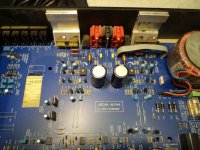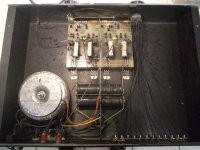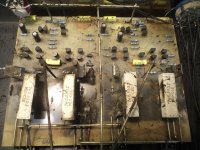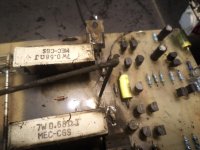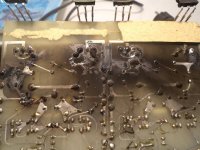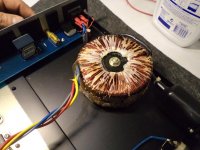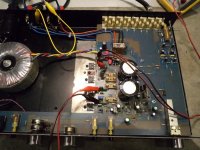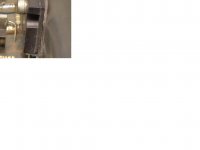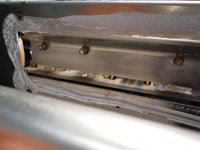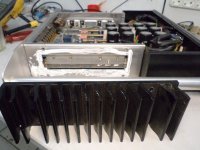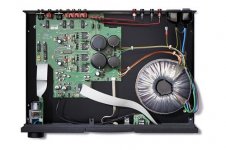The amplifiers do of course have a reasonable high (but no too high) input impedance. Since the preamps have a pretty low output impedance they do set the working standard, if no other influences set in.
It is remarkable that with the right impedance standards unscreend cables do have a better sound (less detrimonial side effects) than screened cables. Here in my studio I have my active monitors connected with unscreened Vovox balanced cables, which strangely do sound better than the standard high-quality microphone cables I had before.
Devices in my second system (except phono of course) are connected with thin, slightly twisted solidcore cables, which provided the best sound (-transfer). For this I am using high quality enameld copper wire made before WW2. The wires are not screened and work perfectly without any negative effects like noise and hum.
It is remarkable that with the right impedance standards unscreend cables do have a better sound (less detrimonial side effects) than screened cables. Here in my studio I have my active monitors connected with unscreened Vovox balanced cables, which strangely do sound better than the standard high-quality microphone cables I had before.
Devices in my second system (except phono of course) are connected with thin, slightly twisted solidcore cables, which provided the best sound (-transfer). For this I am using high quality enameld copper wire made before WW2. The wires are not screened and work perfectly without any negative effects like noise and hum.
What about cable/connector terminations, little RC networks buried secretly at the cable ends. Dennis Morecroft swears by them.
That may be, but at the end ot the cables there is always a device, which usually sets the standard. A cable with RC "filters" just manipulates the cables' parameters. Well designed amplifiers wont need that for sure.
DNM cables sometimes have RF filters to reduce influences. Sometimes that will be needed...but the price of more than 200€ is tough for parts which cost maybe 1€ or less... you can have things like that made in China for 1 $ per 100pcs.
HFTNs
I definitely do not want to start another cables discussion - it is about system synergy and proper grounding.
Member
Joined 2009
Paid Member
The reason I was interested in cables is not so much to stir up that old nest but to decide whether to go with RCA connectors, which I normally do, or introduce a DIN connector to the chassis in the spirit of what is traditional Naim. I haven't started to do the drilling and filing of the chassis yet. I don't have any experience with DIN connectors or cables, but maybe one cable instead of two RCA's has an appeal. And because this is DIY it's fun to do things a bit different from the mainstream - but with a good reason.
It would seem a natural to pair your amplifier with a DIY Naim preamp clone. In the last year or so, quality NAC 152 clone kits have appeared and these provide some guidelines for at least a more contemporary preamp design. That solves the issues of what you do with an odd 4 pin DIN cable once you are committed to using it with its 24V supply for the discrete electronics. As you aren't averse to SMT, that might make it an even more interesting project in it's own right. 🙂The reason I was interested in cables is not so much to stir up that old nest but to decide whether to go with RCA connectors...
Yes, do that! I suggest to make no compromise. Why not use the very nice Lumberg plugs plugs and sockets. And this.
Not particularly cheap, but far less than the fancy "Highend" stuff. And technically far better. (We use the ones with gold plated contacts. ) But also the stuff from Amphenol and Deltron is good.
The mayor disadvantage of these DIN round plugs and sockets is that you cannot use most of the cables which are normally used and approved by the community. What a loss.
Not particularly cheap, but far less than the fancy "Highend" stuff. And technically far better. (We use the ones with gold plated contacts. ) But also the stuff from Amphenol and Deltron is good.
The mayor disadvantage of these DIN round plugs and sockets is that you cannot use most of the cables which are normally used and approved by the community. What a loss.
Last edited:
Member
Joined 2009
Paid Member
please check the Digikey.ca catalogue and tell me if you see something suitable there
As it happens, I do plan to design and build a pre-amp. Keeping my options open for that one for now.
As it happens, I do plan to design and build a pre-amp. Keeping my options open for that one for now.
Last edited:
I used to use these in my craziest Naim years:please check the Digikey.ca catalogue and tell me if you see something suitable there
SD-50SN CUI Inc. | Connectors, Interconnects | DigiKey
There are, of course, better and more expensive ones. Just make sure they are 180 degrees, because that's what Naim are using.
As for RCA vs DIN, my opinion only:
- With DIN you may theoretically avoid some ground loops (left and right running the same ground/return between devices)
- With RCA you will avoid a theoretical crosstalk between channels (both channels too close together in DIN cables).
IMO, Naim stick to DIN, just because they can. That's something that makes them "different" from the crowd, and also pushes the customers towards all-Naim systems... Good for business!
"DIN sounds better", low mass etc... I don't know about that. In my opinion DIN contacts are crappy. If I wanted circular connector I would go with something more serious like the military gold plated Amphenols (real gold plating here). But then you'll need adapters since you'll be the only one in audio with such connectors. I'm familiar with military circular connectors. They are incredible for quality of the contact, current that you can run per pin size, air- and moist- tightness and so on...
Be careful with the type of DIN cable and connectors as to which are appropriate. This pic, courtesy of AlexC1981, shows the two types on the one early NAP110/NAC42 system.
A 5 pin/180 degree type is used for the source inputs and a 4 pin, 208 degree type for the SNAIC line + 24V power connector.
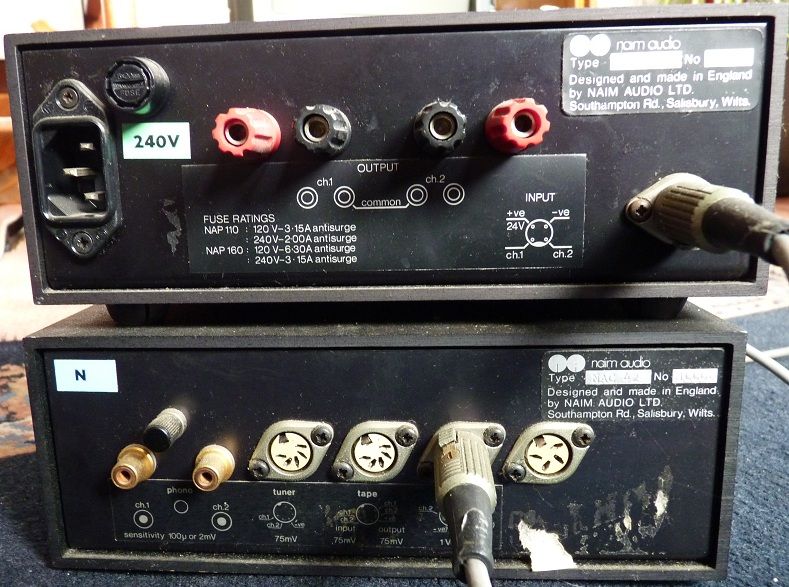
A 5 pin/180 degree type is used for the source inputs and a 4 pin, 208 degree type for the SNAIC line + 24V power connector.

Trust me ....either they didn't know zilts and base their designs on a given schematic with rough calculation with some refinements done by ear according to their musical taste...
That on its own is a very important thing since their audience and clients had usually similar musical orientation so actually they made machines for a specific audience ...
Try to listen to house music from any of these machines and it will sound rubbish ...
One bothered to make a comparison between DIN and Rca while Quad will have one twist inside including mains , input output leads, and in some cases B C E leads from output transistors tied up all together ....
Most of this type of equipment have absolutely NO study on how the machine will behave when the ambient Temp will rise above 22 degrees Now that .... is far from simplicity issues
Most of their equipment has no proper Vbe multiplier OBVIOUSLY meaning that machine will behave different from stability and performance aspects if working in Sweden or if working in Saudi Arabia
Audiolab 8000a failed to keep the machine stable and prevent the internal PCB from toasting since cooling of the internals was a total failure even though CFP with adouble Vbe on the divers .
Musical Fidelity used in many machines no Vbe multiplier often weird approach to tune the amplifier making service a nightmare weird approach for cooling that was inefficient
NVA till today thinks that TIP 142-147 is a proper transistor to operate with the bottom of the case as a heat sink in audio amplifier application again without a Vbe multiplier in a plastic enclosure and so on
Arcam follows often similar principal and approach
Most of them use slow transistors often very over estimated
Nva had models without fuses against many regulation probably illegal while many of the machines had issues like that ...
Magnum though that it could run a pair of 2955-3055 with almost 55+55 volt rails cooled at the bottom of the case and running of a transformer barely 100-120 VA Many others like Musical Fidelity made mistakes , wrong calculations , or poor choices on the transforemer selection considering available power
Resulting trafo is toasted far before the amplifier and obviously if the "stated" power is required trafo will run out of steam increasing distortion in audible levels ....
East electronics managed 1830 audio machines last year ( only ) so any of the things said here we have seen first hand .... So NO NO NO you can argue as much as you like about the sound in a specific music content but there is no innovation or technology on any of their machines .....
I could write down in details for each model but i will just place a few photos to prove my sayings ...
Smoky regards
Sakis
That on its own is a very important thing since their audience and clients had usually similar musical orientation so actually they made machines for a specific audience ...
Try to listen to house music from any of these machines and it will sound rubbish ...
One bothered to make a comparison between DIN and Rca while Quad will have one twist inside including mains , input output leads, and in some cases B C E leads from output transistors tied up all together ....
Most of this type of equipment have absolutely NO study on how the machine will behave when the ambient Temp will rise above 22 degrees Now that .... is far from simplicity issues
Most of their equipment has no proper Vbe multiplier OBVIOUSLY meaning that machine will behave different from stability and performance aspects if working in Sweden or if working in Saudi Arabia
Audiolab 8000a failed to keep the machine stable and prevent the internal PCB from toasting since cooling of the internals was a total failure even though CFP with adouble Vbe on the divers .
Musical Fidelity used in many machines no Vbe multiplier often weird approach to tune the amplifier making service a nightmare weird approach for cooling that was inefficient
NVA till today thinks that TIP 142-147 is a proper transistor to operate with the bottom of the case as a heat sink in audio amplifier application again without a Vbe multiplier in a plastic enclosure and so on
Arcam follows often similar principal and approach
Most of them use slow transistors often very over estimated
Nva had models without fuses against many regulation probably illegal while many of the machines had issues like that ...
Magnum though that it could run a pair of 2955-3055 with almost 55+55 volt rails cooled at the bottom of the case and running of a transformer barely 100-120 VA Many others like Musical Fidelity made mistakes , wrong calculations , or poor choices on the transforemer selection considering available power
Resulting trafo is toasted far before the amplifier and obviously if the "stated" power is required trafo will run out of steam increasing distortion in audible levels ....
East electronics managed 1830 audio machines last year ( only ) so any of the things said here we have seen first hand .... So NO NO NO you can argue as much as you like about the sound in a specific music content but there is no innovation or technology on any of their machines .....
I could write down in details for each model but i will just place a few photos to prove my sayings ...
Smoky regards
Sakis
here is a classic case from Arcam ....cooling is not enough for the stated power , Vbe multiplier exists but for the one ch heat sink failed to meet the Vbe and Arcam made no changes and released the amplifier on the market without giving a F U CK about this ...
Look at the left Vbe and the look at the right
Look at the left Vbe and the look at the right
Attachments
Marvelous magnum Pics and PLEASE if any one is able to tell me how its possible in this amplifier the Vbe is a NPN for the left Ch and a PNP for the right ch please let me know ...I will not be bothered to reverse engineer the schematic to find out ...
Attachments
And of my favorite of all times Alchemist Forseti ....
Even though a unique design designed by an American ...updated by Mr Paravichini and manufactured by the English actually a nest of mistakes
Even though a unique design designed by an American ...updated by Mr Paravichini and manufactured by the English actually a nest of mistakes
Attachments
Now you can argue as much as you like about the sound of any of these amplifiers but trust me the cheapest Japanese equipment will not suffer from any of those issues .....
I can post countless photos more and details but this is getting longer than it should be ....
Enjoy hifi porn ... !!!!
I can post countless photos more and details but this is getting longer than it should be ....
Enjoy hifi porn ... !!!!
ok.
ok.
easy.
Calm down.
Take a deep and slow breath.
And show us some Naim examples. Or Nytech. Or ION. Or Exposure. Or ONIX. Or even Creek. Or Heed. Or...
(and the japanese amps from those days were either good and expensive - like some Luxman, etc. - or relativly cheap and unbelievably crappy - like Akai, etc.)
Discussing about Naim amps does not necessarly mean that we have to copy everything.
If you ever had a Naim amp in your service please tell us about it.
Funny, the only faulty ones I have encountered yet were the modified ones. In German we have a word for that, maybe not translateable: verschlimmbessern - which means: when trying to change something for the better you actually make it worse.
ok.
easy.
Calm down.
Take a deep and slow breath.
And show us some Naim examples. Or Nytech. Or ION. Or Exposure. Or ONIX. Or even Creek. Or Heed. Or...
(and the japanese amps from those days were either good and expensive - like some Luxman, etc. - or relativly cheap and unbelievably crappy - like Akai, etc.)
Discussing about Naim amps does not necessarly mean that we have to copy everything.
If you ever had a Naim amp in your service please tell us about it.
Funny, the only faulty ones I have encountered yet were the modified ones. In German we have a word for that, maybe not translateable: verschlimmbessern - which means: when trying to change something for the better you actually make it worse.
Now lets come back in today....
Look at Naim today not much changes These people do not want to learn
They state 60W per ch ....heatsink is the bottom of the case
Somebody tell me what am i missing ....is the bottom of the case capable to accommodate 120 W of dissipation ?
It is probably wrong from me to complain ...sooner or later machines like that will visit my shop ...Happy hour is usually Monday morning ( especially if the owners had a small party in the weekend with a BBQ ... meat and or others included and smoked !!! )
Look at Naim today not much changes These people do not want to learn
They state 60W per ch ....heatsink is the bottom of the case
Somebody tell me what am i missing ....is the bottom of the case capable to accommodate 120 W of dissipation ?
It is probably wrong from me to complain ...sooner or later machines like that will visit my shop ...Happy hour is usually Monday morning ( especially if the owners had a small party in the weekend with a BBQ ... meat and or others included and smoked !!! )
Attachments
ok.
ok.
easy.
Calm down.
Take a deep and slow breath.
And show us some Naim examples. Or Nytech. Or ION. Or Exposure. Or ONIX. Or even Creek. Or Heed. Or...
(and the japanese amps from those days were either good and expensive - like some Luxman, etc. - or relativly cheap and unbelievably crappy - like Akai, etc.)
Discussing about Naim amps does not necessarly mean that we have to copy everything.
If you ever had a Naim amp in your service please tell us about it.
Funny, the only faulty ones I have encountered yet were the modified ones. In German we have a word for that, maybe not translateable: verschlimmbessern - which means: when trying to change something for the better you actually make it worse.
These are the statistics you may create your own conclusion ....
It isn't a class A output stage. Pretty close to class B.Somebody tell me what am i missing ....is the bottom of the case capable to accommodate 120 W of dissipation ?
It isn't a class A output stage. Pretty close to class B.
What is the output power of this amp? If it is about 120 W per channel and we roughly, but almost reasonably, assume the efficiency of a class B amp at about 2/3, we have a dissipation of 120 W at least.
It's probably all about design here...
Best regards!
- Status
- Not open for further replies.
- Home
- Amplifiers
- Solid State
- TGM10 - based on NAIM by Julian Vereker
